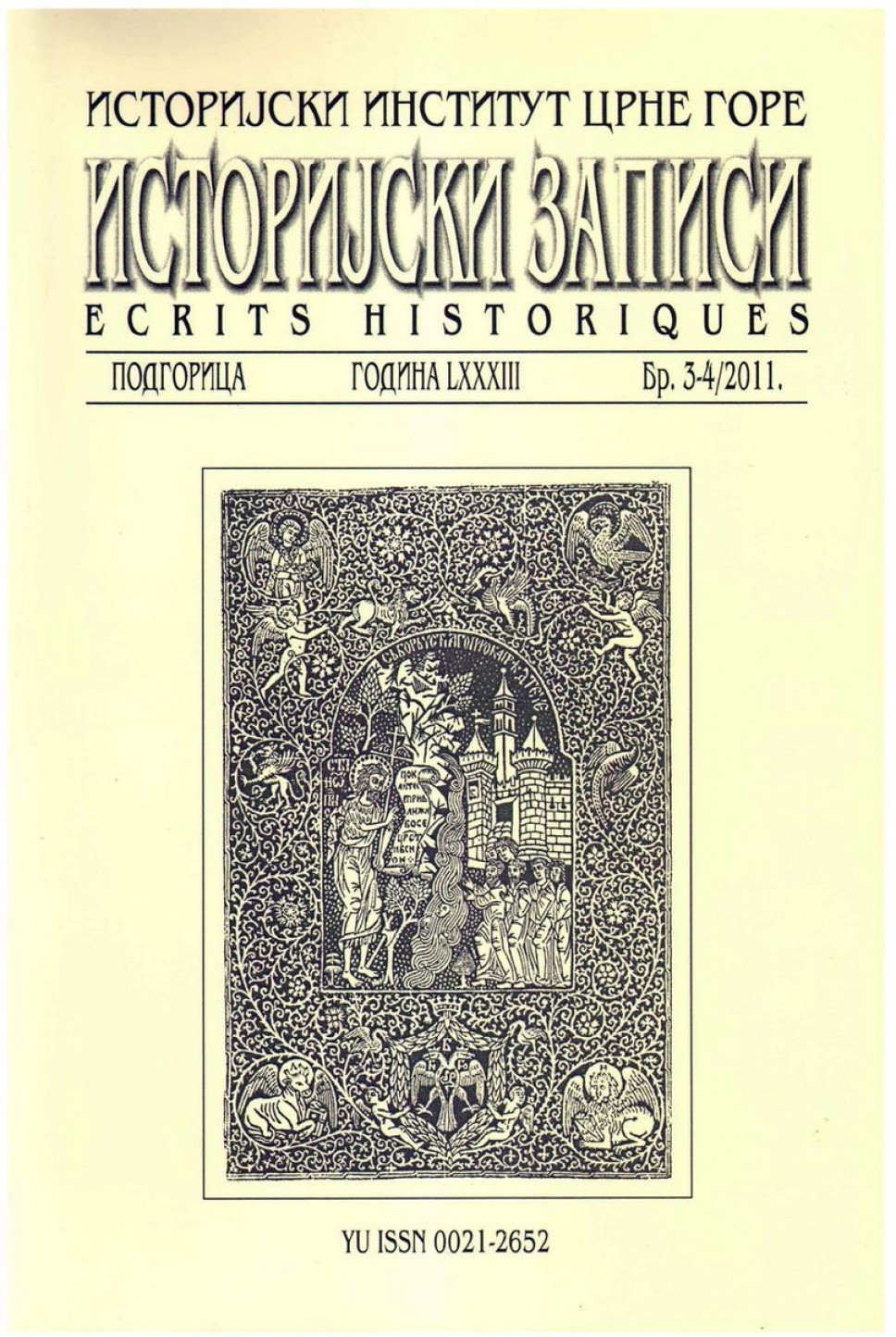ČLANCI
- Dragana KUJOVIĆ, Udžbenici na orijentalnim jezicima u arhivskim i muzejskim fondovima Crne Gore – Porijeklo prisustva, uloga i značaj orijentalno – islamske pismenosti u sveukupnom kulturnom životu crnogorskog društva, 7 – 35 DOWNLOAD
Abstract: A textbook is qualified as a pattern of a culture and a powerful cultural product that represents a special medium of the whole intellectual development of a child, his identity formation and development of the system of values. Manuscripts in oriental languages in Montenegro, as well as in areas that are in the neighborhood were under Ottoman rule, were created by local people, or as a part of regular school duties, or as a special expression of love toward the written word. The value of textbooks in oriental languages, manuscripts or printed books, can be evaluated by their importance as a historical testimony or by all elements taken into account in a process of the professional evaluating of a manuscript or old printed books.
- Dragi MALIKOVIĆ, Kreditno poslovanje između Dubrovnika i Kotora tokom XIV i XV vijeka, 37 – 61 DOWNLOAD
Abstract: In the course of the 14th and 15th century there was a constant exchange of skilled workforce between Dubrovnik and Kotor necessary for the normal functioning of the two cities. During the specified period, a number of workers, predominantly qualified ones, including doctors, pharmacists, but also many craftsmen such as jewellers, gunsmiths, stonecutters, left more developed Dubrovnik for Kotor. At the same time, less qualified workers, or uneducated famuli, went to Kotor during the 14th and 15th century with the intention of gaining appropriate qualifications and education in the city under Srdje. Thanks to their activities, both of these Yugoslav centres, during the specified period, reached a certain level of economic and social development.
- Lovorka ČORALIĆ, Crmničanin Marko Đikanović – Pukovnik mletačkih prekomorskih postrojbi (FANTI OLTRAMARINI), 63 – 86 DOWNLOAD
Abstract: Article deals with the military career and work of Marko Đikanović, a denizen of Crmnica and a colonel of Venetian transmarine infantry units (fanti oltramarini) in the eighteenth century. The article is based on the study and analysis of until now relatively less known sources from the Archivio di Stato di Venezia [State Archive of Venice] and the Državni arhiv u Zadru [State Archive of Zadar]. Based on these sources, the article follows Đikanović’s career and military activity from the time he was captain until his death in the rank of colonel. The article also discusses other military active members of the Đikanović family.
PRILOZI
- Bojan NOVAKOVIĆ, Tragom podataka o nalazu ostave franačkog novca iz Orline kod Nikšića, 87 – 96 DOWNLOAD
Abstract: In this article the author emphasizes the discovery of the Frankish coins’ hoard in Orlina near Nikšić. The hoard contained a jar of the Louis the Pious’ (814-840) silver coins and some unidentified jewellery. Considering the hystorical surroundings which could cause the appearance of this hoard, the author stresses the potential importance of this finding as a way of getting a clearer picture of the situation in the Adriatic hinterland made after the Peace Treaty of Aachen.
- Goran ČUKIĆ, Živina (EPITELIOMA BASOCELLULARE) 1484. godina (paganstvo, sloboda ili…), 97 – 111 DOWNLOAD
Abstract: The article deals with tradition of the folk name “zivina” (“poultry”), being used for clinical picture of Basal cell carcinoma. In Cetinje chronicle is noticed clinical picture of Basal cell carcinoma (Epitelioma basocellulare). The notice was written by Ivan Crnojevic in 1484. Explanation of appearance of illness is theological as much as it is biological. It appeared «multi causative »: a) as a damnation appeared by touching “the holy object», border stone, and the actor was by that sinful; b) the illness appearance by sparkling of border stone while its breaking. The name has been in use for almost five centuries.
- Zvezdana VUŠOVIĆ-LUČIĆ, Sjekire iz praistorije u Zavičajnom muzeju Nikšić,113 – 122 DOWNLOAD
Abstract: The County Museum Nikšić is hosting the exhibition of the axes dating back to the prehistoric periods of Mesolithic, Neolithic, Eneolithic, Early Bronze Age and Late Bronze Age. Those axes were used as tools, weapons, or as items of special use.

